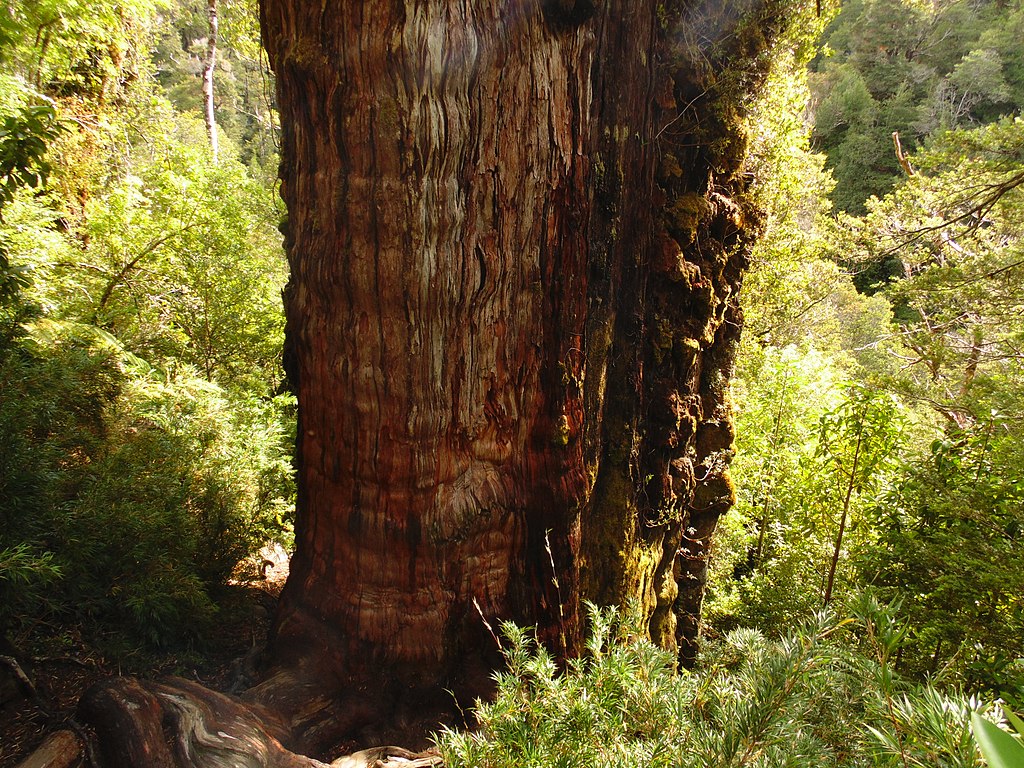About 5,400 years ago, a Patagonian cypress seedling sprouted in a valley in present-day Chile. Over the millennia, the colossus grew to 100 feet tall, with a trunk 13 feet in diameter, making it one of the largest in Alerce Costero National Park. Now, research reported by Science indicates the tree may also be the oldest living non-clonal tree — one that doesn’t share a common root system — in the world.
Jonathan Barichivich, the Chilean environmental scientist who estimated the tree’s age, grew up on indigenous land in the park. “It was like a waterfall of green, a great presence before me,” he told The Guardian, recalling the first time he saw the Alerce Milenario, or Gran Abuelo (which means “great-grandfather” in Spanish), tree as a child.
If Barichivich’s estimate is correct, the Alerce Milenario’s age surpasses that of Methuselah — a 4,853-year-old Great Basin bristlecone pine in California currently thought to be the oldest non-clonal tree — by centuries. According to the publication, non-clonal trees tend to not live as long as clonal trees. At an estimated 9,558 years old, the world’s longest-living clonal tree is thought to be Old Tjikko, a Norway spruce in Sweden.
Barichivich, who works at the Climate and Environmental Sciences Laboratory in Paris, and colleague Antonio Lara first took a core sample of the Alerce Milenario’s trunk in 2020. Typically, Smithsonian Magazine reports, researchers calculate a living tree’s age by taking a core sample and counting the rings in the trunk. They can also take a root sample and use carbon-dating.

But Alerce Milenario’s massive width meant a standard borer could not reach its center. Plus, Newsweek reports, due to its advanced age, much of the tree is dead, and its center likely rotten, making an accurate core sample impossible. Most of the tree’s life remains in its vulnerable root system, with any disturbance posing a threat to its vitality.
To protect the tree, Barichivich had to devise a different way to estimate its age.
“It’s not the point to make a big hole in the tree just to know that it’s the oldest,” Barichivich told Newsweek. “The scientific challenge is to estimate the age without being too invasive.”
The 2020 core sample — which reached about 40% into the tree’s trunk, according to The Guardian — showed 2,400 rings. According to Smithsonian Magazine, Barichivich and Lara examined complete core samples from other Patagonian cypress trees and studied the species’ growth rate, as well as how environmental changes affect tree development. They also used statistical modeling to estimate its age. Based on their results, they determined there is an 80% chance the tree is older than 5,000 years, likely 5,484.

The researchers, who plan to publish their results in 2023, say they’re less concerned with breaking records and more interested in securing federal protection for Gran Abuelo, according to Smithsonian Magazine. Although there’s a platform intended to protect its roots from treading visitors, it is still endangered by this and other threats. Preserving it, they say, is important for multiple reasons.
“The Gran Abuelo isn’t just old, it’s a time capsule with a message about the future,” Barichivich told The Guardian. “We have a 5,000-year record of life in this tree alone, and we can see the response of an ancient being to the changes we have made to the planet.”












